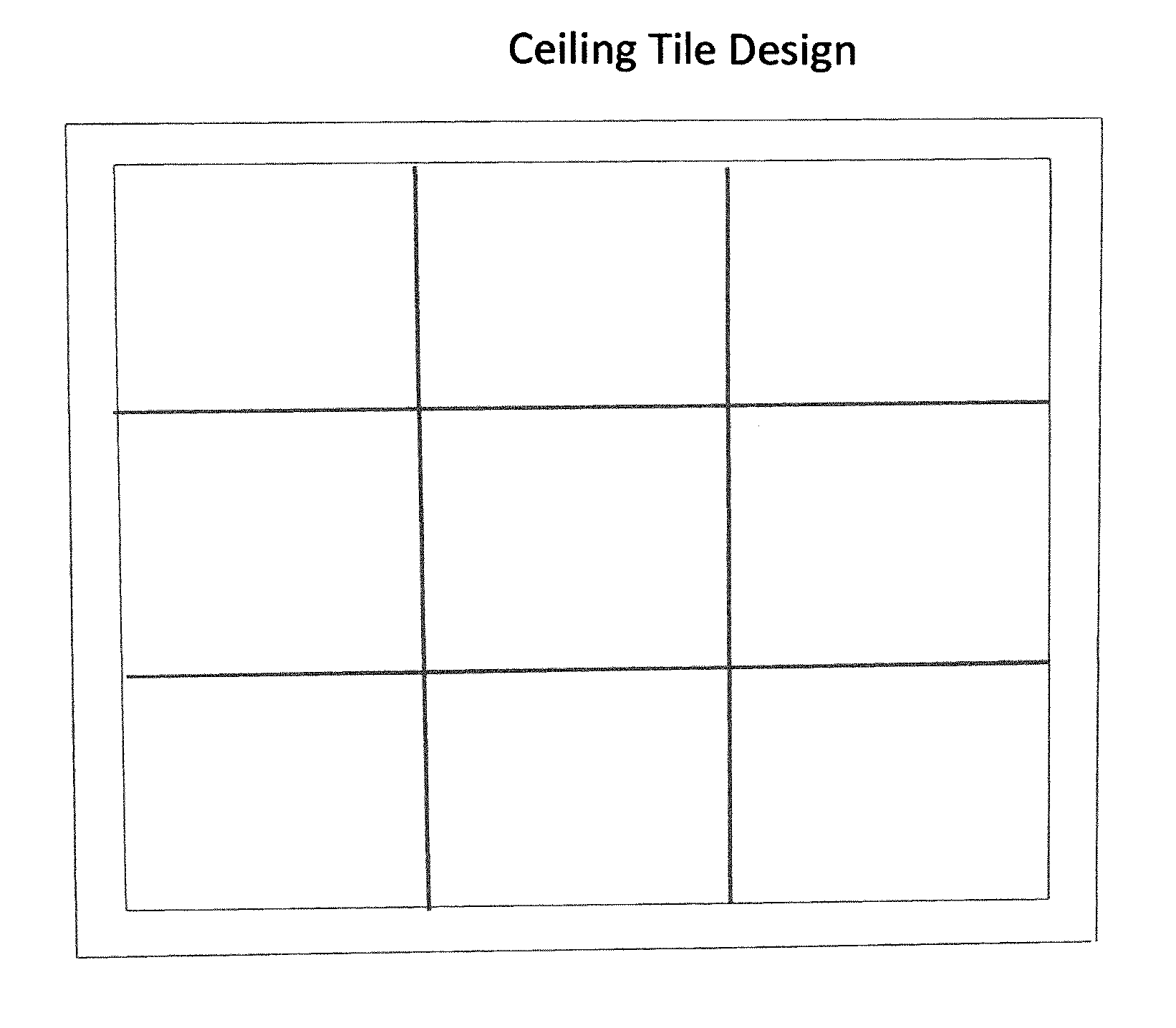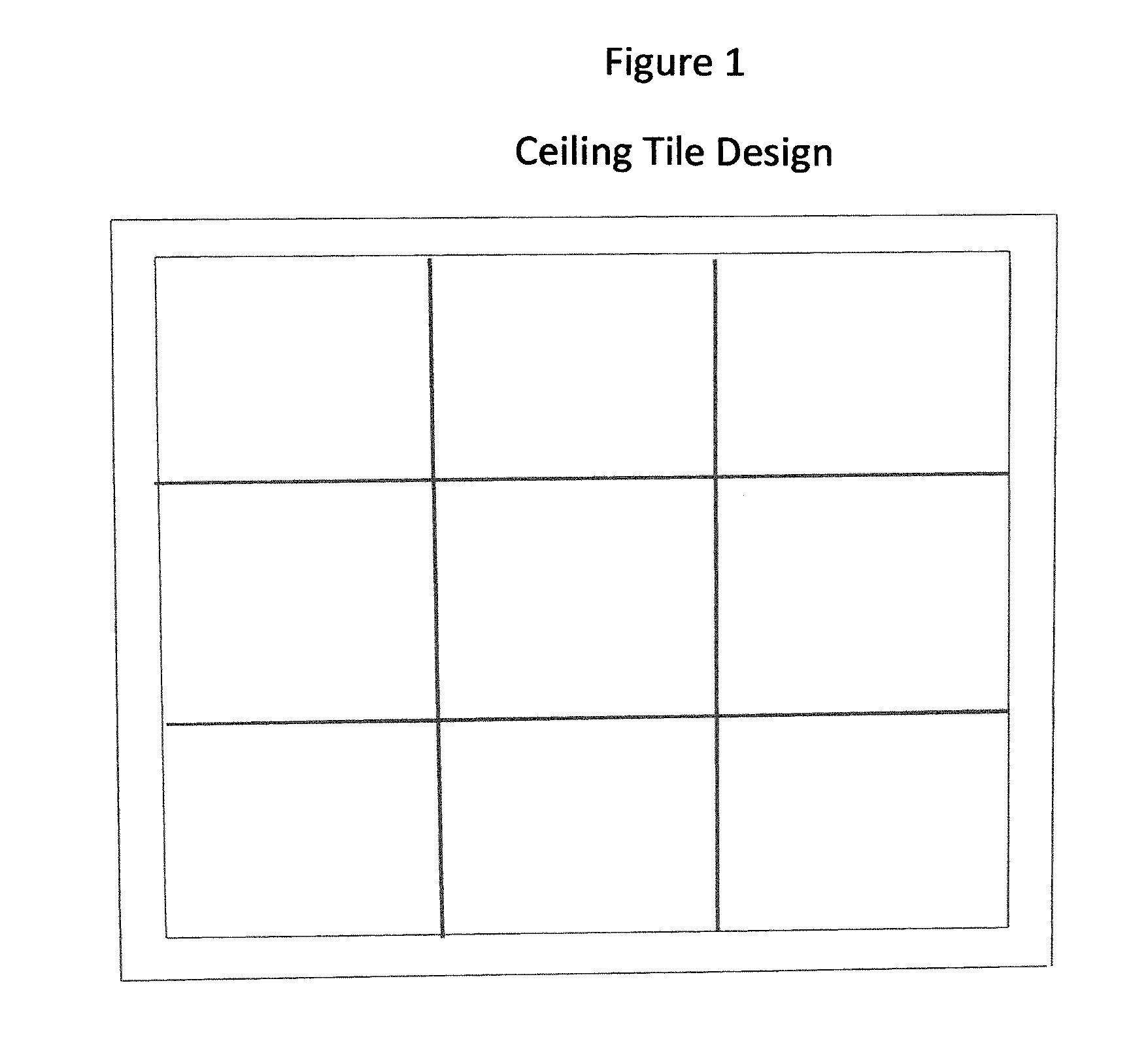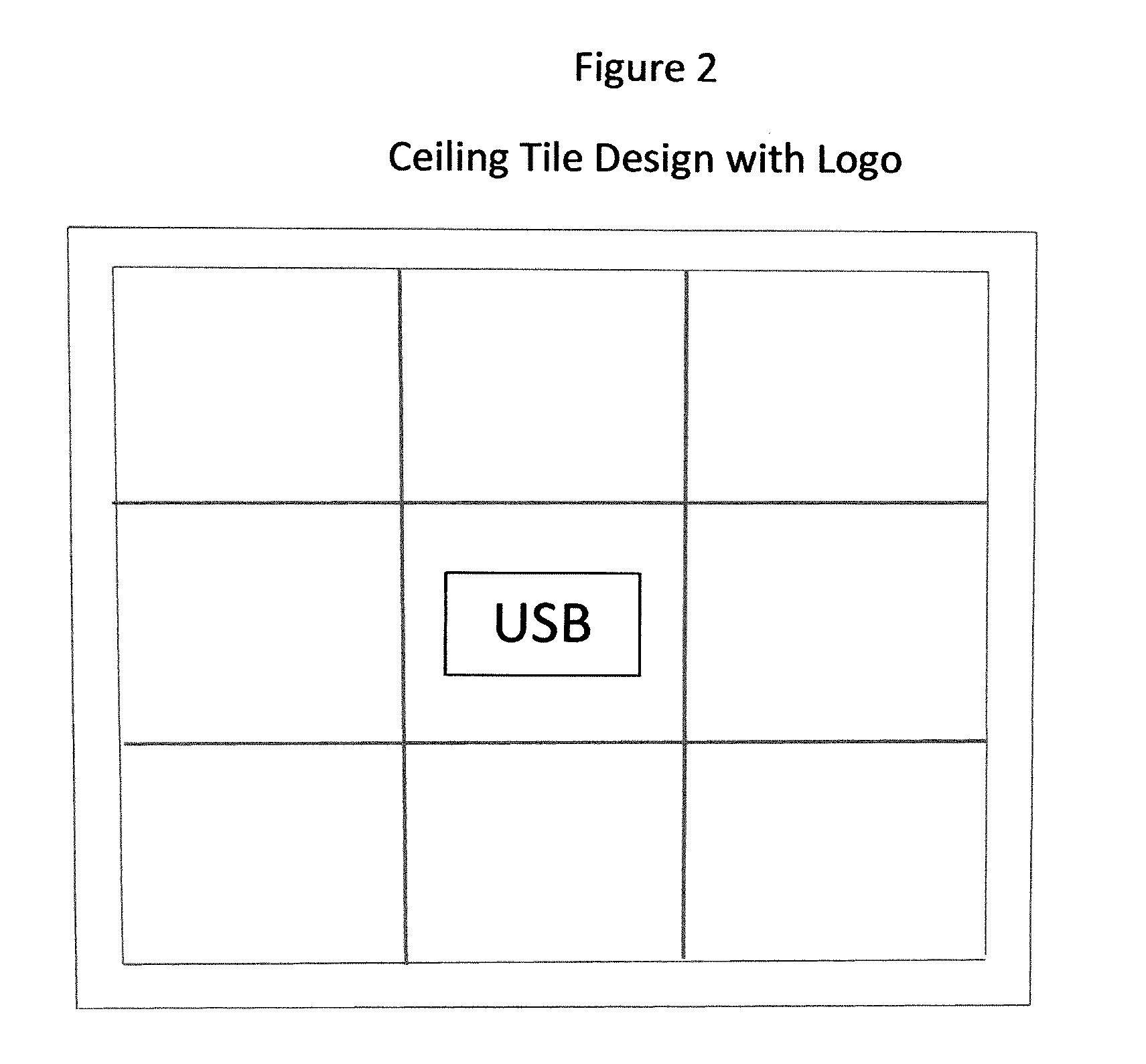Apparatus and method of making a nonwoven ceiling tile and wall panel
a non-woven and ceiling tile technology, applied in the field of apparatus and method of making a non-woven ceiling tile and wall panel, can solve problems such as safety and health concerns, and achieve the effects of reducing melting point, reducing sound waves, and reducing air flow
- Summary
- Abstract
- Description
- Claims
- Application Information
AI Technical Summary
Benefits of technology
Problems solved by technology
Method used
Image
Examples
example 1
[0026]Initial work was done using a blend of Polyester fibers below:
−6 denier × 76 mm White PET fibers65%Huvis Type 131 4d × 51 mm 110° C. BiCo35%
This was tested for FR using the E84 fire test and found to have heavy smoke and burn rapidly. Acoustic values were marginal.
example 2
[0027]Many additional blends were tried applying a topical spray to the fiber during blending with the following formula:
Lurol L6240.25% on FiberLurol 149510.90% on fiber by weight
This improved the Flame resistance but smoke was still an issue. Acoustic values were marginal.
example 3
[0028]The next blend tried was:
−6 denier × 76 mm White PET fibers64%−15 denier × 76 mm Brown PET fibers 1%−4 denier × 51 mm Clear PETG fibers35%
A topical spray with the following formula was applied during blending:
Lurol L6240.25% on FiberLurol 149510.90% on fiber by weight
This resulted in much improved stiffness, Class A rating on the E84 test, and a Noise Reduction Coefficient of 70%. It showed that there was a need to improve the flame resistance more and to improve the Noise Reduction.
PUM
| Property | Measurement | Unit |
|---|---|---|
| melt temperature | aaaaa | aaaaa |
| thickness | aaaaa | aaaaa |
| lengths | aaaaa | aaaaa |
Abstract
Description
Claims
Application Information
 Login to View More
Login to View More - R&D
- Intellectual Property
- Life Sciences
- Materials
- Tech Scout
- Unparalleled Data Quality
- Higher Quality Content
- 60% Fewer Hallucinations
Browse by: Latest US Patents, China's latest patents, Technical Efficacy Thesaurus, Application Domain, Technology Topic, Popular Technical Reports.
© 2025 PatSnap. All rights reserved.Legal|Privacy policy|Modern Slavery Act Transparency Statement|Sitemap|About US| Contact US: help@patsnap.com



